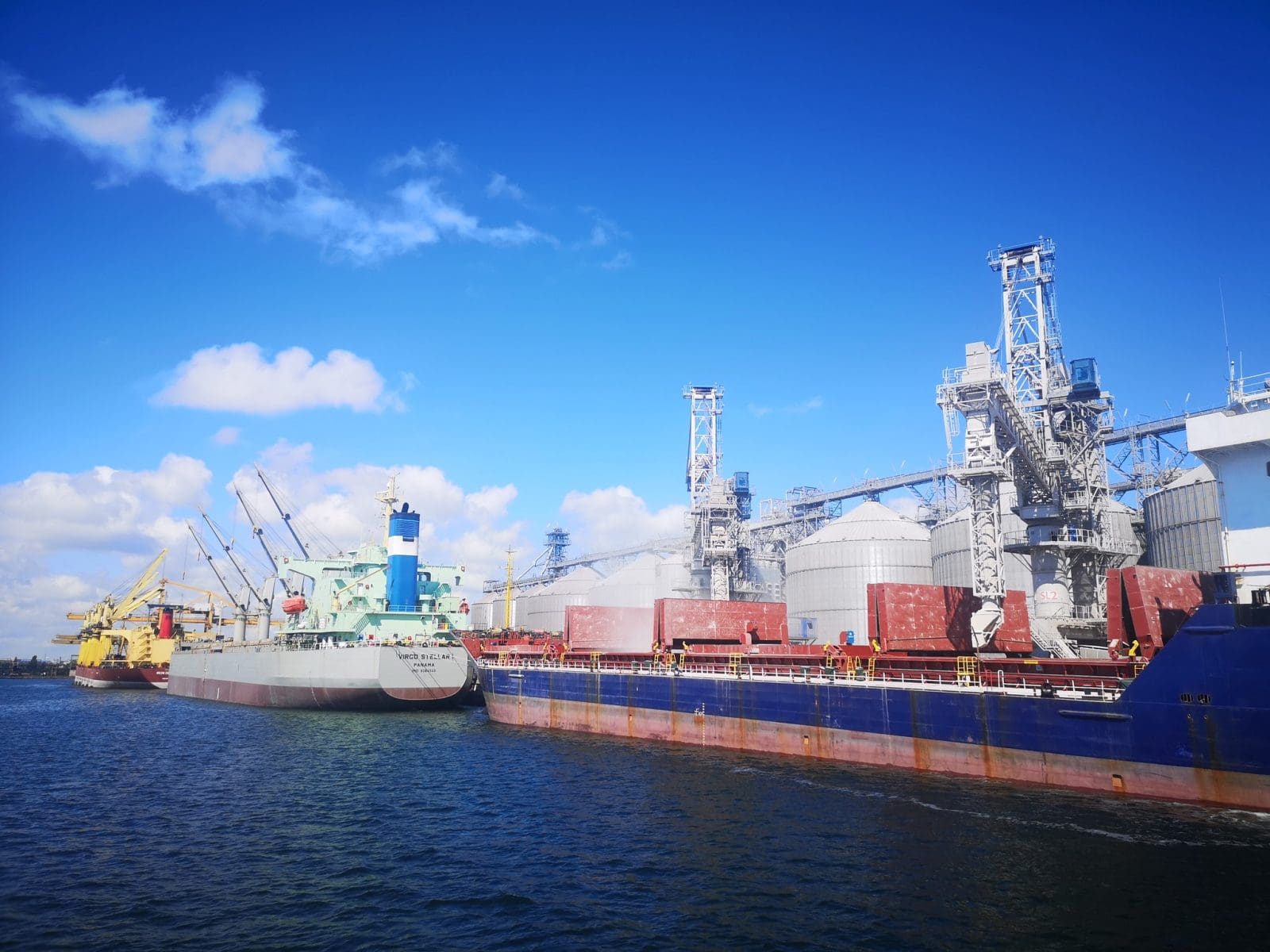
Ukraine President Denys Shmyhal and Romanian Prime Minister Marcel Ciolacu following last week’s official visit by Ukraine to Bucharest. Photo: Marcel Ciolacu
A LANDMARK accord was signed late last week between Ukraine and its southern neighbour Romania aimed at increasing the export of Ukrainian grain through Romanian territory following Moscow’s withdrawal from the Black Sea Grain Initiative, which facilitated the safe passage of grain-laden vessels to global consumers.
The agreement was signed in the Romanian capital, Bucharest, at the conclusion of talks between Ukrainian Prime Minister Denys Shmyhal and his Romanian counterpart Marcel Ciolacu. The two leaders reportedly discussed ways to accelerate grain exports from the war-ravaged nation by upgrading river, road, rail and port infrastructure, including repairing infrastructure damaged by the recent Russian drone attacks. The two countries will also strive to streamline border checks to expedite the transit of Ukrainian produce to the international market.
Goal for 60pc
According to Ciolacu, Romania’s goal is to facilitate more than 60 percent of Ukraine’s grain exports, filling a significant proportion of the export gap left after the closure of the Black Sea grain corridor. Ukraine’s Danube ports accounted for around 25pc of the nation’s grain exports before Russia withdrew from the corridor deal. The ambitious target to double the export of Ukrainian grain from 2 million tonnes (Mt) per month to 4Mt was reportedly agreed upon a week earlier at a meeting in Romania’s Danube River town of Galati which included Western officials.
The Romanian leader added that the Black Sea port of Constanta will continue to be the key export hub for the movement of Ukraine’s grain to consumers across the globe. The Sulina Channel, a 63km long distributary of the Danube, connecting major Ukrainian ports on the river to the Black Sea, and lying entirely within the borders of NATO member Romania, will also play a significant role.
The Danube, Europe’s second-longest river, has been crucial to the movement of freight for centuries. Upstream of Tulcea, in eastern Romania, some 80km from the Black Sea, the river begins to spread out into its vast delta, which has three major channels: Chilia, Sulina, and St George.

Constanta is Romania’s largest port. Photo: Constanta Port
Eyes on Sulina
The Sulina Channel, which has been dredged and straightened, is the only one deep and wide enough for large-scale freight transport to the open sea. The channel is a riverine “freeway” and has historically been fundamental to transporting a wide range of goods from Romania’s inland regions to the Black Sea.
Ships carrying grain depart from Ukraine’s Danube River ports of Izmail and Reni which are situated on the mainstream, or the Chilia Channel, and head to the port of Sulina, at the mouth of the Sulina Channel. From there, they sail around 140km south along the Romanian coastline to Constanta, Romania’s biggest seaport. At this juncture, the cargo is transferred to bigger vessels that transport it out of the Black Sea and into the Mediterranean via the Bosphorus. The beauty of this route is that it is under the constant surveillance and protection of NATO.
However, river congestion is becoming one of the biggest challenges to the plan as this is not a traditional grain export route, with Ukraine relying instead on its extensive rail network and main Black Sea ports of Chornomorsk, Odesa, Pivdennyi and Mykolaiv. Suddenly increasing the number of grain vessels transiting the river system has already led to jams at the mouth of the Sulina Channel and a backlog along its length. Boats are reportedly waiting for days before they can enter the channel leading to lengthy and costly shipping delays for exporters.
Port facilities exposed
The other major challenge is Russia’s continued bombing of Ukraine’s port facilities on the Danube and the crippling effect it could potentially have on this vital export pathway. Grain silos and warehouses were hit during successive Russian drone attacks last week. This follows drone attacks on the same port facilities earlier this month, which damaged almost 40,000t of grain reportedly earmarked for China, Israel and customers in Africa.
The proximity of these assaults to Romania, just a short boat ride across the river, drew international
condemnation, being the closest Russian strikes have come to a NATO member’s territory since the invasion in February last year. By targeting grain warehouses, port facilities and incoming ships, Russia is testing the west’s resolve and ability to provide freedom of navigation to shipping in the region.
Meanwhile, Romania has emerged as the European Union’s biggest soft-wheat exporter in the first six weeks of the 2023-24 marketing year (Jly-Jun). According to European Commission data, the EU exported 3.72 million tonnes (Mt) of soft wheat to August 13, down 11pc from 4.19Mt in the same period last year, with Romania accounting for 1.04Mt or 28pc of the total. Poland was next with 734,000t, followed by Bulgaria with 685,000t, France with 682,000t and Germany with 414,000t. The Romanian, Polish and Bulgarian numbers were all bolstered by the flow of Ukrainian grain through their respective countries for shipment to global consumers.
In the first seven months of 2023, 8.1Mt of Ukrainian grain was shipped through Romania’s Black Sea port of Constanta, 42.8pc of the 18.9Mt program. This compares to total shipments in 2022 of 8.6Mt.
Constanta space in demand
Ukrainian grain has to compete for space in Constanta, which traditionally handles Romania’s own agricultural exports plus those of its landlocked neighbours, Hungary and Serbia. Prior to the war in Ukraine, Constanta shipped a peak of 25Mt of grain in a year, but that record is expected to be toppled in the current calendar year following the government’s investment promise and commitment to Ukraine.
Often referred to as the breadbasket of Europe, Ukraine has traditionally been among the world’s biggest grain exporters. Its economy, crunched by the ongoing war, is heavily dependent on revenue from farming. Like those of the aggressor, Russia, its agricultural exports are crucial to global supplies of wheat, corn, barley, sunflower oil and other foods relied upon so heavily by developing nations.
While the Romanian export pathway cannot handle anywhere near the same volumes as its Black Sea ports, and the costs are much higher, it will be central to Ukraine’s grain export program in the absence of a viable and safe Black Sea corridor.

HAVE YOUR SAY